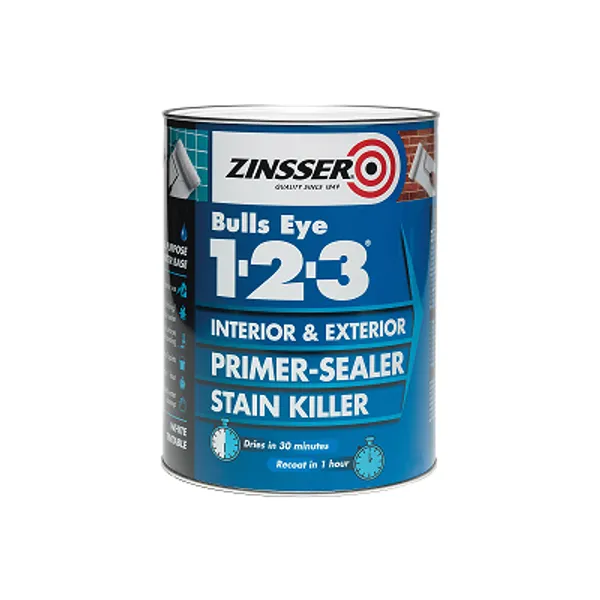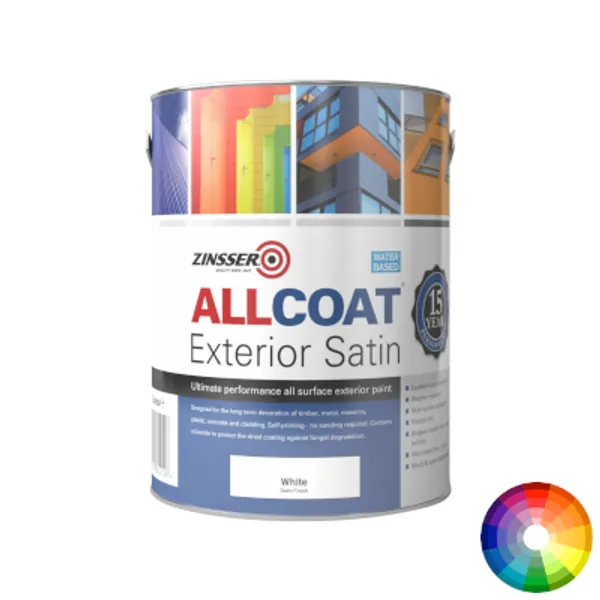Painting Bathroom Tiles - The Ultimate Guide
The bathroom is sometimes one of the hardest rooms to transform due to the permanent nature of the furniture and fittings.
Maybe you have been meaning to give your bathroom that much needed makeover but don't want to take on a large scale DIY project. Well, in this guide we are going to answer the most common questions regarding painting bathroom tiles!
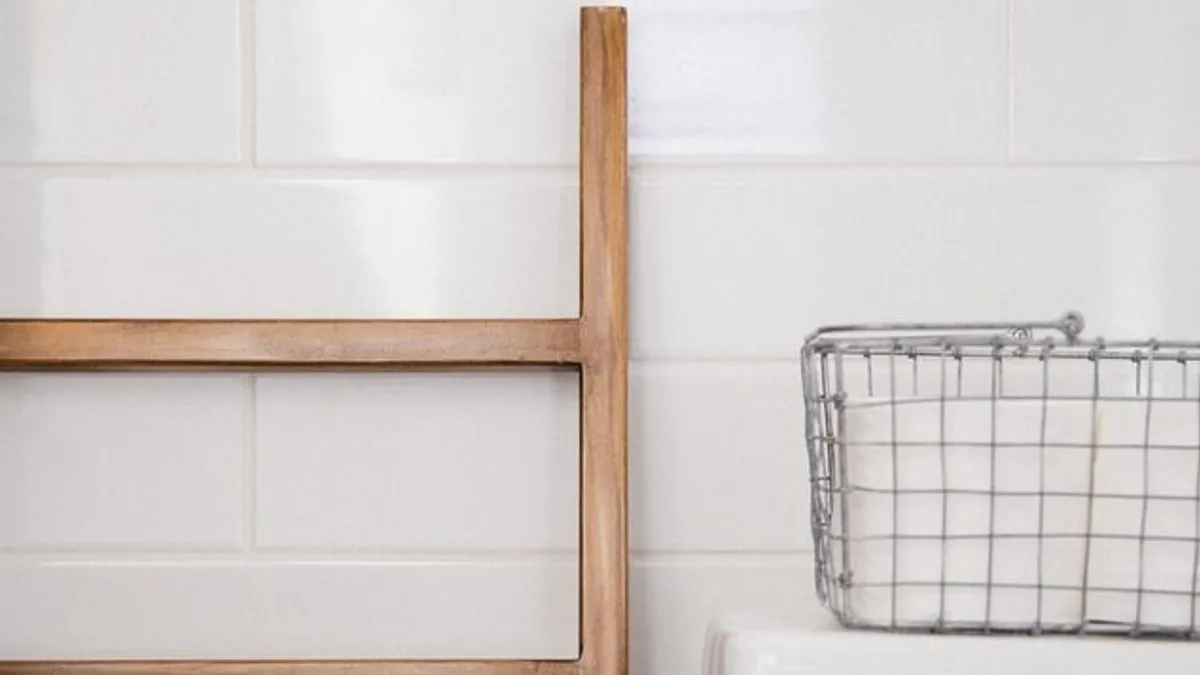
Can You Paint Bathroom Tiles?
Firstly, let's answer the question 'does painting bathroom tiles really work'? The answer is yes, you can paint porcelain, ceramic and pretty much any other bathroom tile material, but it is not always as straight forward as painting interior walls.
If you want a long-lasting finish, the only real way to achieve this is by re-tiling your bathroom, although this is not a popular option as it is a much larger job then simply painting. Not only that, but it will also cost a lot more in labour and material cost.
So, if you do not want to re-tile, then painting the tiles is your best bet. However, be aware that it is not a fault free solution and unless properly prepared and applied, it may lead to problems with the finish down the line.
What Is The Best Paint For Tiles?
So you have chosen that painting your bathroom tiles is the best option. The next step is to find what the best paint will be to complete the project.
Primer
Our experts would always recommend you use an adhesion primer before painting bathroom tiles. A primer creates a layer on the bathroom tiles that allows the paint to stick to the surface. As we have mentioned, bathroom tiles are not any easy surface to paint, so it is definitely worth applying a primer to ensure the job is done to the best possible standard.
But what primer should you use? Well, there are two fantastic options that offer excellent adhesion to any surface:
1. Owatrol E.S.P - extremely effective at providing adhesion to any shiny surface ready for painting. It is colourless and can be applied with a lint-free cloth making it incredibly easy to use!
2. Zinsser Bullseye 1-2-3 - a slightly cheaper option, Zinsser Bullseye is an excellent all-round primer that prepares any surface ready for painting.
Paint
Now that you have a primer to help the paint adhere to the bathroom tiles, the next job is to find the right paint. This is slightly more complicated then finding a primer as it depends on what you are looking for.
Firstly, it's crucial to find the right paint finish for the look you want to achieve. Their are four main types of paint finishes; matt, eggshell, satin & gloss. These finishes all vary in terms of sheen or shine, which is essentially how much light the paint reflects. A matt finish is completely flat, while gloss offers the most sheen.
Gloss
Gloss tiles help to brighten up any bathroom. The high levels of sheen they offer makes any bathroom look more airy and can make the room look bigger. As with any satin or gloss paints, they are easy to clean which is perfect if you have kids that you have to constantly clean up after!
Matt
Matt painted tiles offer a more modern look, with the lack of sheen providing a relaxing and calm feeling in the room, especially if you have large areas of tiles. The lack of sheen can also help cover any marks or dirt better than glossy tiles.
Matt paints are notoriously easy to mark, and due to the humid nature of a bathroom a regular matt paint would not be suitable. Due to this, it is crucial to use a scrubbable matt paint or a very durable matt that can cope with the higher demands of a bathroom.
So make sure you decide what finish you would like before you select your paint. Once you have done this, it is time to select the best paint for you.
Selecting The Best Paint
When selecting what paint to use it is important to remember that painting bathroom tiles is not always a long-term solution. Because of this, we would recommend you use the best quality paint possible to ensure that you do not have to repeat the process in a couple of years when the finish is not the same as it was when you painted.
So, while you can use any paint you would like, we would recommend you use Zinsser Allcoat. Zinsser AllCoat is an extremely durable paint that is designed to go any just about any surface, interior or exterior. It offers excellent resistance against cracking, blistering and flaking, and due to it's weather resistance, it is more than up to the humidity of a bathroom.
The other reason we would recommend Zinsser Allcoat is that it is available in matt, satin & gloss finishes, and can be mixed to any colour you want thanks to our paint mixing service!
This makes it the simply perfect paint to get creative and completely transform your bathroom.
How To Paint Tiles In Bathrooms
So you now have the tools to paint your bathroom tiles. Now let's talk about how exactly to go about painting them!
Step 1: Preparation
One of the most important steps of any decorating project, as any professional decorator will tell you, is preparation.
Firstly, you must clean the tiles in order to ensure that nothing will prevent the paint from adhering. You can do this using a sugar-soap solution or use a pre-made universal cleaner such as Zinsser Universal Degreaser & Cleaner. Wipe down the surface with some water and a paper towel, ensuring that no residue is left.
Check the grouting of the tiles before moving on to the next step. If it needs cleaning or even re-grouting, ensure you do this before painting for the best possible finish.
Once the tiles are clean, you must then sand them down to create a 'key' for the paint to adhere. This creates a slightly rougher surface that makes it much easier to paint. Using a 120 grit sandpaper, give the tiles a sand down, ensuring you are wearing eye, hearing, and breathing protection. Once you have scuffed the tiles, clean with water and a cloth to ensure no material is left. Any dust will prevent the paint from performing so make sure they are fully clean.
Step 2: Priming
As previously mentioned, primers are extremely easy to apply. Primers are very thin and usually colourless, allowing you to simply apply a layer using a brush or roller.
Plus, you only need one coat of primer, so this step should not take long at all!
Step 3: Painting
Now the important part, the painting. Ensuring you use the best tools for this part of the process will pay dividends with the final finish, trust us!
The best roller for painting tiles is something small and easy to control as you do not have to cover large or course surfaces.
We would go for the 4" Hamilton Prestige Mini Frame with 4" Hamilton Perfection Short Pile Roller, which will give you full control over the painting. We would also recommend using a good quality brush such as the 2" Hamilton Performance Cutting in Brush, which will allow you to get where the roller can't.
Firstly, 'cut in' using the brush, painting around the edges of the tiling you are painting. Once this is done, you can then use the roller to evenly apply the paint to the rest of the surface.
Leave to fully dry and repeat the process again with your second coat. It may take two or even three coats to achieve the finish you desire.
If you are looking to add some little details, why not either paint the grouting in a complimentary shade or paint around the edges of the tiling in an accent colour? These are great ways to really make the bathroom tiles stand out and although it can be a fiddly job, they are a real point of difference when done well.
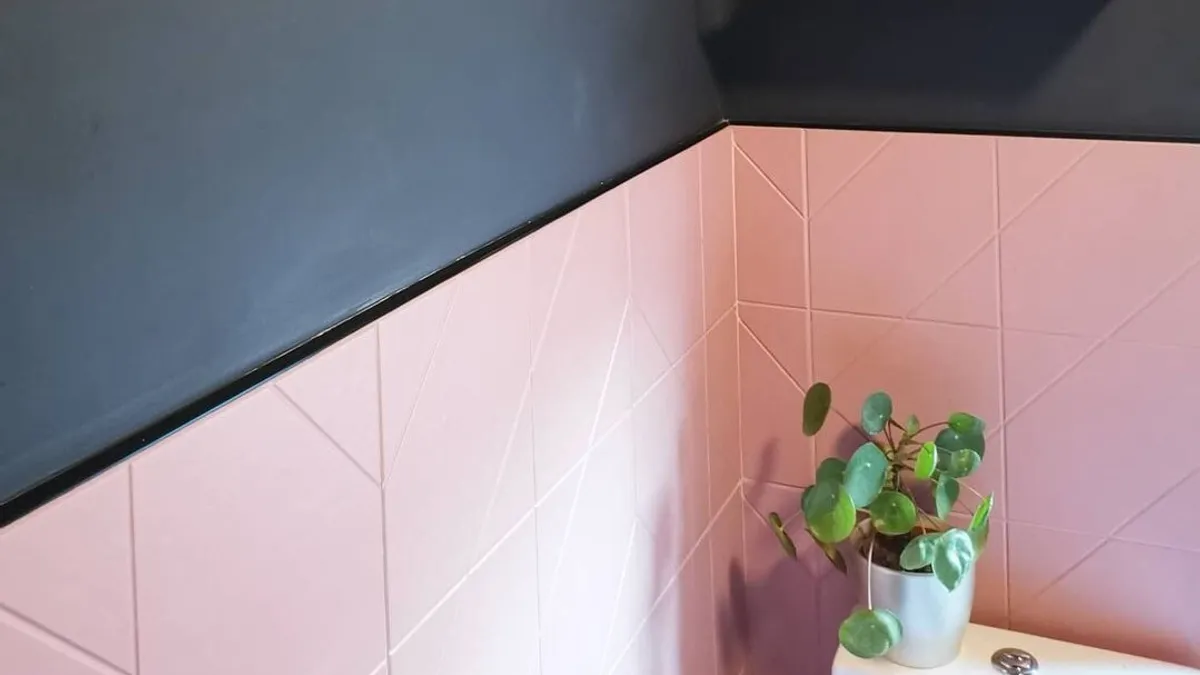
Painting Bathroom Tiles Before And After
Want to see the finish you could achieve by painting your bathroom tiles. Here are a few stand out before and after's for some inspiration!
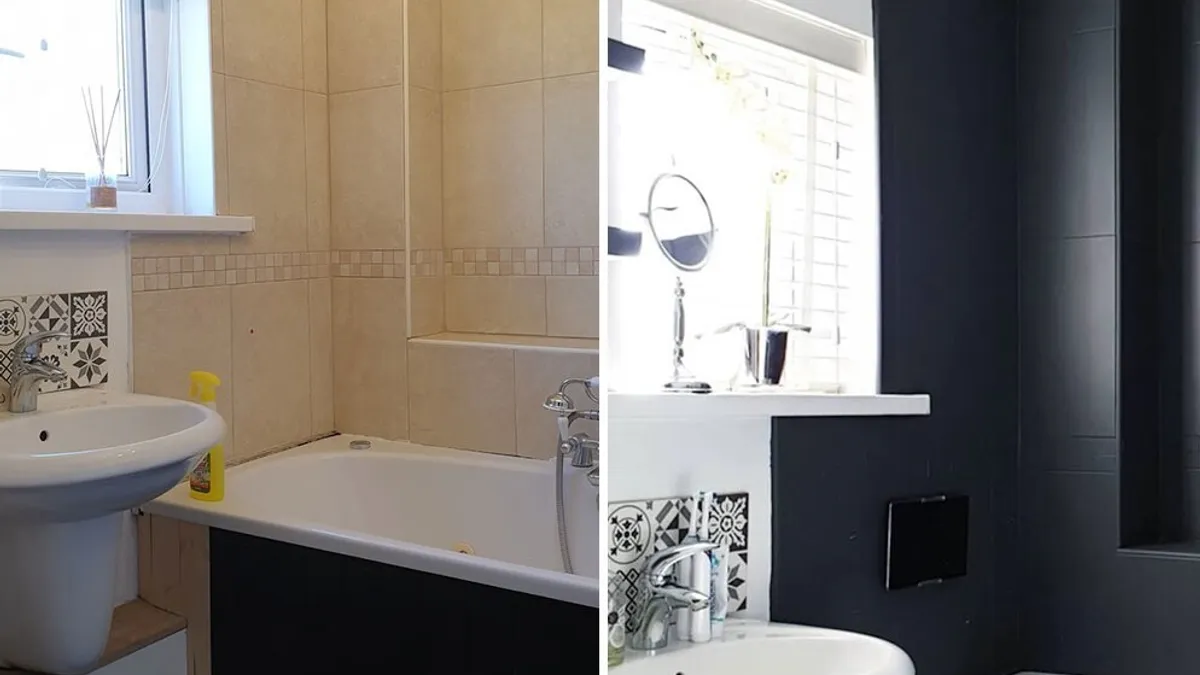
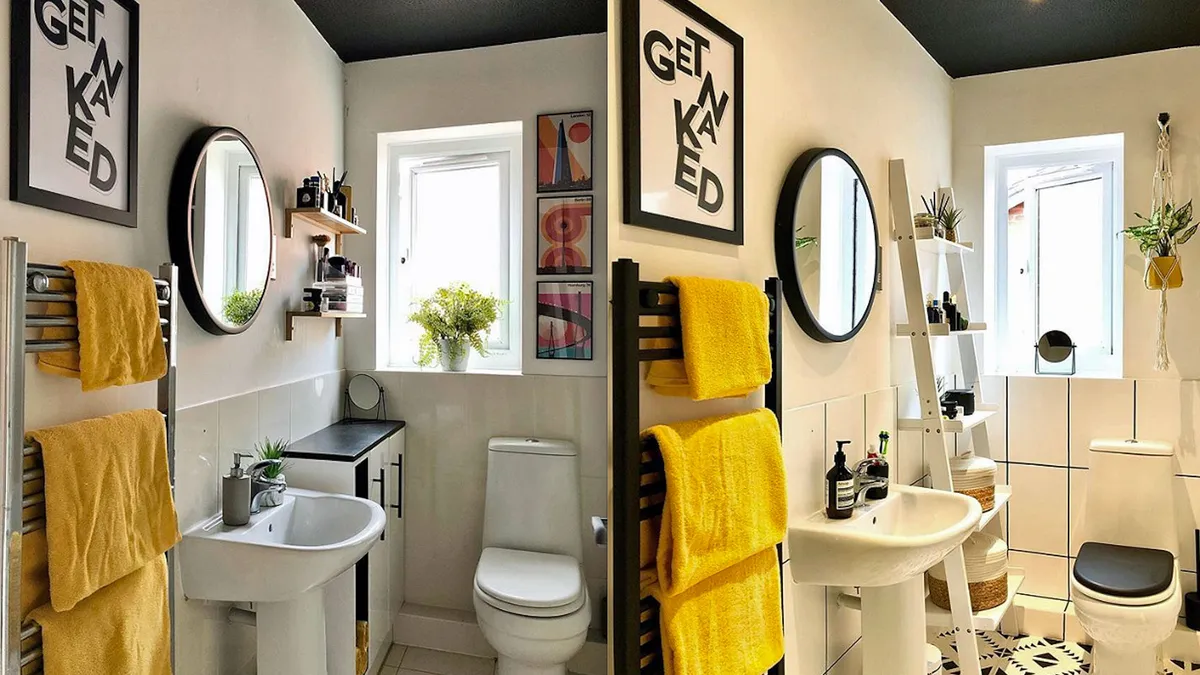
Frequently Asked Questions
Q. What is the best roller for painting tiles?
We would recommend using a 4" roller to give you the best control over the surface you are painting. When it comes to the roller sleeve to use, a short-pile roller will give you the smoothest possible finish. A great combination would be the 4" Hamilton Prestige Mini Frame with 4" Hamilton Perfection Short Pile Roller.
Q. Can you grout after painting tiles?
Yes, you can paint the grout after you have painted tiles. This can leave a beautiful contrasting finish and a sleek modern look. You could either paint the grout using a grout pen or regrout the surface once you have painted the tiles.
Q. How long does painting tiles last?
It is difficult to say as it completely depends on the paint you are using, the conditions they will have to endure and the level of attention that was taken when they were prepped before painting. Your painted tiles will last a good few years without needed maintenance if you use a good-quality paint and prepare the surface well before starting.
We hope this has answered any questions you may have had regarding painting bathroom tiles. At Painters World we have a wide range of paints available, so no matter the job, we've got the right tools for you! Shop our huge range of products today & get FREE next working day delivery on all orders over £50.



Sign up now and be the first to know about exclusive offers, product updates, and announcements.

